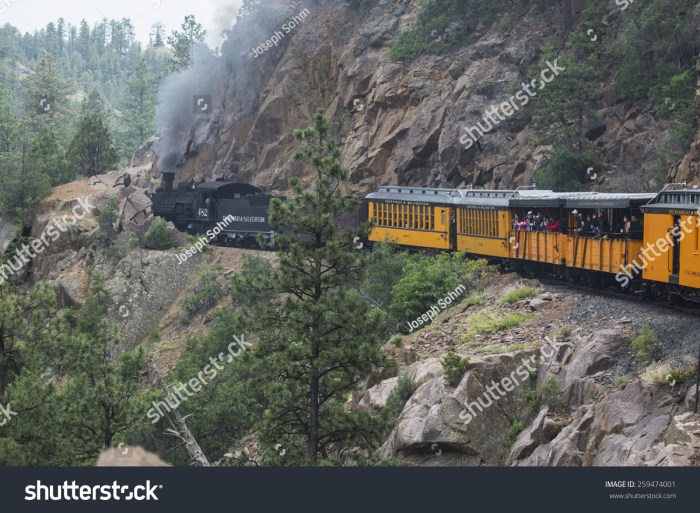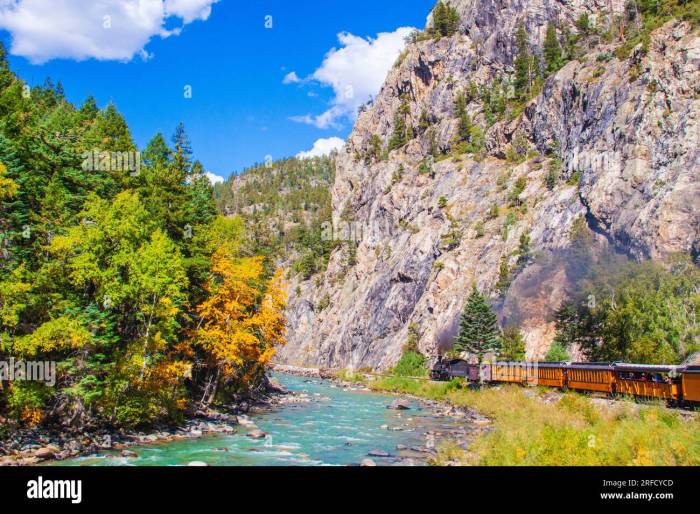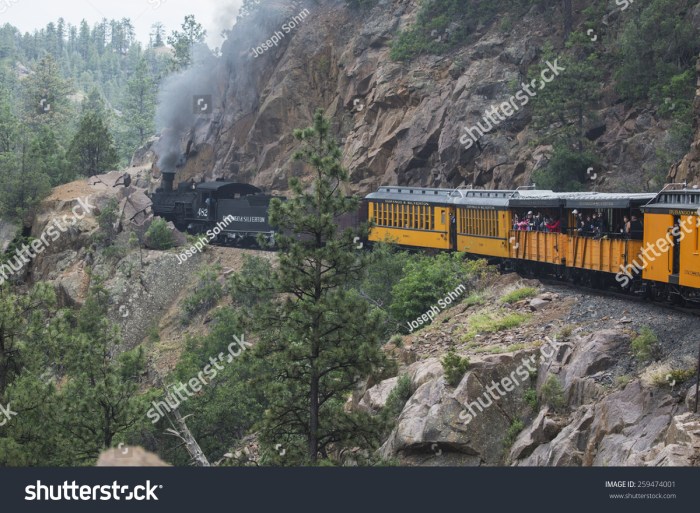Best time to visit HCMC: Unlocking the perfect time to explore the vibrant city of Ho Chi Minh City depends on your preferences. From the bustling markets to the serene temples, HCMC offers a unique experience throughout the year. Understanding the weather patterns, seasonal events, and tourist crowds is key to planning your ideal trip. This guide dives deep into the best time to visit HCMC, considering everything from the cost of flights to the optimal weather for outdoor activities.
Ho Chi Minh City, a dynamic metropolis, boasts a rich tapestry of culture and history. Its bustling streets, ancient temples, and vibrant markets offer a unique blend of experiences. The city’s climate, however, plays a crucial role in determining the ideal time for your visit. Understanding the varying weather conditions, along with seasonal events, will help you choose the perfect time to experience the magic of this captivating city.
Introduction to Ho Chi Minh City (HCMC)
Ho Chi Minh City, formerly Saigon, is a vibrant metropolis pulsating with energy and culture. It’s a bustling hub of commerce, a captivating blend of history and modernity, and a culinary paradise. From ancient pagodas to gleaming skyscrapers, the city offers a diverse tapestry of experiences for every traveler. It’s a city that seamlessly integrates its rich past with its forward-looking present.This dynamic city, a significant economic and cultural center in Vietnam, showcases a unique blend of historical landmarks, modern architecture, and a thriving culinary scene.
Its geographical location and climate play a crucial role in determining the ideal time to visit. Understanding these aspects will help you plan a truly unforgettable journey.
Key Attractions and Activities
Ho Chi Minh City boasts a remarkable array of attractions. Visitors can explore iconic landmarks like the Notre Dame Cathedral, a testament to French colonial influence, and the Central Post Office, a historical gem. The city’s bustling markets, like Ben Thanh Market, offer a captivating glimpse into Vietnamese daily life and provide an opportunity to purchase unique souvenirs and local products.
Beyond the historical sites, there are countless opportunities for cultural immersion, from visiting temples and pagodas to exploring the city’s vibrant street art scene. For those seeking adventure, the Cu Chi Tunnels offer a unique perspective on Vietnam’s history.
Cultural and Historical Significance
Ho Chi Minh City holds a significant place in Vietnamese history. The city’s historical significance stems from its pivotal role as a major trading center and the heart of French colonial influence. This dual legacy is reflected in the city’s architecture, from the colonial-era buildings to the traditional Vietnamese houses. Visiting these historical landmarks provides a deeper understanding of the city’s rich past and the evolution of Vietnam.
Museums and historical sites offer further insight into this rich history, enabling visitors to delve into the city’s multifaceted narrative.
Unique Characteristics Affecting the Best Time to Visit
The city’s climate, characterized by a tropical monsoon climate, plays a pivotal role in determining the best time to visit. High humidity and rainfall are prevalent during the monsoon season, which impacts outdoor activities and overall comfort. This factor is critical when selecting the most suitable time for travel, enabling a more comfortable and enjoyable experience.
Seasonal Climate Comparison
| Season | Temperature (°C) | Rainfall (mm) | Humidity (%) | Ideal Activities |
|---|---|---|---|---|
| Dry Season (November-April) | 25-30°C | Low | 70-80% | Outdoor activities, sightseeing, exploring markets |
| Rainy Season (May-October) | 27-32°C | High | 80-90% | Indoor activities, exploring museums, shopping |
This table illustrates the typical climate variations across the different seasons. The dry season generally offers more pleasant weather for outdoor exploration, while the rainy season, though sometimes less ideal for outdoor activities, presents unique opportunities for experiencing the city’s vibrant markets and shopping scene. These variations should be considered when planning your visit.
Weather Patterns and Climate
Ho Chi Minh City (HCMC) boasts a tropical climate, which means consistent warmth and plenty of sunshine throughout the year. However, understanding the distinct seasons and their associated weather patterns is crucial for planning your trip. The variations in rainfall and humidity significantly influence your experience, impacting everything from outdoor activities to your comfort level.Understanding the typical weather conditions allows you to pack appropriately and anticipate potential challenges, ultimately ensuring a more enjoyable and productive visit.
Knowing the average temperature, rainfall, and humidity levels can help you choose the ideal time to experience the city’s vibrant culture and attractions.
Monthly Weather Overview
Ho Chi Minh City experiences two main seasons: the dry season and the wet season. The dry season, typically from November to April, offers pleasant temperatures and sunshine. Conversely, the wet season, from May to October, brings heavy rainfall and increased humidity. Knowing these seasonal shifts will help you prepare for your trip and decide when to visit.
- November to April (Dry Season): This period is characterized by warm, sunny days with relatively low humidity and minimal rainfall. Expect average temperatures to hover around 27-30°C. This is generally the most pleasant time to explore the city’s numerous attractions and enjoy outdoor activities. This season is a favorite for many tourists seeking a comfortable and engaging experience.
- May to October (Wet Season): This season brings higher humidity and frequent showers, sometimes heavy downpours. The average temperature stays relatively high, around 28-32°C. While it might rain frequently, the city is still lively and the atmosphere is unique. The humid conditions might make some activities less enjoyable, so be prepared for occasional disruptions to outdoor plans.
Average Temperature, Rainfall, and Humidity
The average temperature in HCMC remains consistently high throughout the year, ranging from a low of 24°C to a high of 32°C. Humidity is another key factor, typically averaging around 80% throughout the year. Rainfall is concentrated during the wet season, with significantly more precipitation during the months of May to September.
Ho Chi Minh City (HCMC) is a fantastic place to visit any time of year, but the best time is definitely during the dry season, from November to April. Knowing the visa requirements for your destination is crucial, especially if you’re planning a trip to Puerto Rico. For details on the visa requirements for Puerto Rico, check out this handy guide: visa requirements for puerto rico.
The pleasant weather and fewer crowds make it ideal for exploring the vibrant city. So, plan your trip to HCMC during these months for a truly unforgettable experience!
| Month | Average Temperature (°C) | Average Rainfall (mm) | Average Humidity (%) | Ideal Activities |
|---|---|---|---|---|
| November | 27 | 30 | 75 | Sightseeing, shopping, exploring markets |
| May | 29 | 180 | 85 | Visiting museums, indoor activities |
| August | 28 | 250 | 88 | Exploring the city’s temples and pagodas |
| December | 27 | 15 | 70 | Taking boat trips, exploring parks |
Pros and Cons of Visiting During Different Months
Choosing the right time to visit HCMC depends entirely on your preferences. The dry season is ideal for those seeking pleasant weather and fewer disruptions, but it’s also the most crowded time of year. The wet season, while offering a different experience, may not be suitable for those who prefer consistent sunshine.
| Month | Pros | Cons |
|---|---|---|
| November-April (Dry Season) | Pleasant weather, low rainfall, fewer crowds | Higher prices, more tourists |
| May-October (Wet Season) | Lower prices, fewer tourists, unique atmosphere | Higher humidity, frequent rainfall |
Seasonal Events and Festivals
Ho Chi Minh City (HCMC) pulsates with vibrant cultural life, and its calendar is filled with exciting festivals and events that showcase the city’s rich traditions and diverse community. These events are a key part of the city’s identity and can greatly influence the best time to visit for different types of experiences.Understanding the timing and nature of these celebrations allows visitors to immerse themselves fully in the local atmosphere and appreciate the unique charm of each season.
Popular Festivals and Events
HCMC hosts a variety of festivals throughout the year, catering to different interests and tastes. From bustling street fairs to elaborate religious ceremonies, these events offer a captivating glimpse into the city’s cultural heritage.
- Tet Nguyen Dan (Lunar New Year): This is the most significant Vietnamese festival, and it’s celebrated with immense enthusiasm in HCMC. Families gather, preparing elaborate meals, exchanging gifts, and visiting temples. The city is adorned with vibrant decorations and festive displays, and the atmosphere is electric with excitement. The festivities often last for several days, creating a wonderful atmosphere for experiencing the cultural heart of the city.
This is usually in late January or early February, making it a key event to consider when planning a visit.
- Mid-Autumn Festival (Trung Thu): This festival, celebrated in late September or early October, is a time for families to come together to enjoy mooncakes and lanterns. The lanterns, often intricate and beautifully crafted, light up the night sky and create a magical ambiance. The festival is a great time to experience the vibrant atmosphere and family traditions of HCMC.
- Buddha’s Birthday (Vesak): Celebrated in May, this significant Buddhist holiday involves processions, prayers, and offerings at temples. The atmosphere is peaceful and reverent, showcasing the city’s strong Buddhist influence. This occasion is a unique opportunity to witness a significant religious ceremony and experience the devotion of the community.
- Christmas and New Year’s Eve: Although not a traditional Vietnamese festival, the celebration of Christmas and New Year’s Eve in HCMC is quite popular, especially among expats and tourists. The city transforms into a dazzling display of festive decorations, with numerous parties and events taking place across the city. The excitement and celebratory atmosphere are a compelling aspect of the city’s multiculturalism.
Influence on the Best Time to Visit
The timing of these festivals and events significantly impacts the best time to visit HCMC. For instance, the bustling atmosphere of Tet Nguyen Dan might be overwhelming for some visitors, while the serene beauty of Buddha’s Birthday might appeal to those seeking a peaceful experience. The choice of when to visit depends entirely on the type of experience you seek.
Major Festivals and Dates
| Festival | Approximate Date |
|---|---|
| Tet Nguyen Dan (Lunar New Year) | Late January/Early February |
| Mid-Autumn Festival (Trung Thu) | Late September/Early October |
| Buddha’s Birthday (Vesak) | May |
| Christmas and New Year’s Eve | December |
Tourist Crowds and Bookings
Ho Chi Minh City (HCMC) experiences significant fluctuations in tourist volume throughout the year, impacting the overall experience and the practicality of travel planning. Understanding these patterns helps travelers make informed decisions about when to visit for the best balance of enjoyment and ease. Booking accommodations and transportation in advance, particularly during peak seasons, is crucial to securing the desired options at competitive prices.
Tourist Volume Fluctuations
The tourist influx in HCMC is influenced by several factors, including the global economy, promotional activities, and the specific time of year. Generally, the peak tourist season coincides with the dry season, typically from December to April, when the weather is pleasant and ideal for outdoor activities. Conversely, the monsoon season (May to November) sees a decrease in tourist numbers, offering a more affordable and less crowded experience for those seeking a quieter escape.
Impact of Crowds on Tourist Experiences, Best time to visit hcmc
High tourist volumes can significantly impact the overall experience. Increased crowds can lead to longer wait times at popular attractions, potentially diminishing the enjoyment of the experience. Navigating crowded streets and public transport can also be challenging, and the overall atmosphere may feel more hectic and less serene. Conversely, lower tourist volumes can provide a more intimate and personalized experience, with the opportunity to interact more closely with local culture and traditions.
Booking Accommodations and Transportation During Peak Seasons
Booking accommodations and transportation in advance, especially during peak seasons, is highly recommended. Hotels and popular transport options can fill up quickly, and prices tend to be higher. This proactive approach ensures the availability of preferred options and helps to manage expectations regarding costs. Booking well in advance is essential for securing the best deals and preferred accommodations.
Average Hotel Occupancy Rates
| Month | Average Hotel Occupancy Rate (%) |
|---|---|
| January | 85-90 |
| February | 80-85 |
| March | 80-85 |
| April | 75-80 |
| May | 60-70 |
| June | 55-65 |
| July | 50-60 |
| August | 50-60 |
| September | 55-65 |
| October | 60-70 |
| November | 65-75 |
| December | 80-85 |
Note: These figures are approximate and may vary based on specific hotels and market conditions. Data sources for these rates often come from industry reports and hotel booking platforms.
Activities and Experiences

Ho Chi Minh City offers a vibrant tapestry of experiences, from bustling markets to serene temples. Understanding the best time to enjoy specific activities can significantly enhance your trip. The city’s climate plays a crucial role in shaping the optimal times for various activities, and planning around these factors can make your visit truly memorable.The weather in Ho Chi Minh City, while generally pleasant year-round, exhibits distinct seasonal patterns.
These patterns influence the best time for different activities, whether you’re exploring ancient temples, relaxing in parks, or engaging in water sports.
Temple Visits
Ho Chi Minh City boasts a number of beautiful temples, each with its own unique charm. Visiting during the cooler months, typically from November to April, provides the most comfortable experience. The lower humidity and fewer rainy days allow for a more enjoyable exploration of these serene spaces. The pleasant temperatures and reduced humidity also mean you can spend more time appreciating the architectural details and cultural significance without feeling overheated.
Park Relaxation
Ho Chi Minh City’s parks provide respite from the city’s bustle. Parks are a great place to unwind and enjoy the fresh air. The dry season, between November and April, is ideal for park visits. The pleasant weather allows for leisurely strolls and picnics, while avoiding the potential discomfort of heavy rain and humidity. Parks are a fantastic spot for people-watching and enjoying the city’s atmosphere.
Water Sports and Activities
The warmer months, from May to October, offer optimal conditions for water sports and activities along the Saigon River. The higher temperatures and humidity, while sometimes challenging, also contribute to a more vibrant atmosphere for these activities. However, be aware that the higher rainfall during the rainy season may affect some activities.
Outdoor Activities in Different Seasons
The weather significantly influences outdoor activities.
- Dry Season (November-April): Ideal for exploring parks, temples, and markets. The lower humidity and pleasant temperatures make outdoor activities more comfortable. The city is at its most vibrant during this time, with a greater range of events and activities.
- Rainy Season (May-October): While the weather may be less pleasant for some, this period offers opportunities for unique experiences. The city is less crowded, and many activities, such as visiting the local markets or experiencing the vibrant street food scene, can be enjoyed in a more intimate setting. Consider rain gear and be prepared for showers. Water sports can also be more enjoyable, with a higher water level.
This period can offer more affordable accommodation and fewer tourists, which can be a benefit to budget-conscious travellers.
Experiences Best Suited to Specific Seasons
The different seasons offer distinct opportunities for experiencing Ho Chi Minh City.
- Dry Season (November-April): This is the best time to visit the bustling markets, where you can sample delicious street food and immerse yourself in the local culture. The comfortable weather is ideal for enjoying the city’s rich cultural heritage. Consider attending local festivals and events during this time.
- Rainy Season (May-October): This period is perfect for experiencing the city’s vibrant street food scene in a more relaxed atmosphere. The abundance of fresh produce and diverse local cuisine is truly remarkable during this time. The city offers a different charm with the lower tourist volume.
Budget Considerations
Planning a trip to Ho Chi Minh City (HCMC) requires careful consideration of your budget, especially when factoring in the fluctuating costs throughout the year. The differences between peak and off-peak seasons can significantly impact your overall travel expenses, from airfare to accommodation. Understanding these variations can help you make informed decisions and maximize your budget.The cost of a trip to HCMC is highly dependent on the time of year you visit.
Factors like accommodation availability, flight prices, and demand for activities all play a role in shaping the overall cost. Being aware of these fluctuations allows you to strategically time your trip for optimal value.
Flight Costs
Flight prices to Ho Chi Minh City are influenced by demand and the time of year. Peak season, typically during the dry season (November to April), sees higher demand and consequently, higher prices. Conversely, during the monsoon season (May to October), airfare tends to be more affordable. This fluctuation can be significant, impacting the total cost of your trip.
For example, a round-trip ticket during peak season might cost $500 USD more than the same ticket during the off-season.
Accommodation Costs
Accommodation prices mirror the trend seen in flight costs. Hotels and hostels in HCMC are typically more expensive during peak tourist seasons. Off-peak periods offer more affordable options. The availability of deals and promotions can also vary depending on the time of year. During peak season, hotels may charge a premium for popular locations or specific amenities.
Off-season, however, you might find discounts and special packages.
Activity Costs
The cost of activities in HCMC is not consistently affected by the season. While some activities might have fixed prices regardless of the time of year, others may have varying prices based on demand. For example, tours and excursions might see price fluctuations depending on the time of year, but generally, the cost of visiting local markets or eating at street food stalls remains relatively consistent.
Ho Chi Minh City (HCMC) is a vibrant place to visit any time of year, but the best time is definitely during the dry season, from November to April. The weather is pleasant and ideal for exploring the city’s bustling markets and delicious street food. With the recent news of Japan being named the best wellness destination in Asia japan named best wellness destination in asia , it’s clear that Southeast Asia still offers incredible experiences for those seeking relaxation and adventure.
This dry season is also perfect for taking a trip to HCMC.
Average Costs Table
This table provides a general idea of the average costs for different travel types, considering peak and off-peak seasons. Note that these are averages and individual costs may vary.
| Travel Type | Peak Season (Nov-Apr) | Off-Peak Season (May-Oct) |
|---|---|---|
| Flights (round-trip) | $500 – $800 USD | $300 – $600 USD |
| Accommodation (7 nights) | $300 – $800 USD | $150 – $500 USD |
| Activities (e.g., tours, attractions) | $50 – $200 USD per activity | $40 – $150 USD per activity |
| Food & Drinks | $20 – $50 USD per day | $20 – $50 USD per day |
Impact of Weather on Costs
Weather conditions can indirectly influence the cost of your trip. During the rainy season, some outdoor activities might be less appealing, or even unavailable. This could potentially lead to a reduction in overall costs, as you might choose to prioritize indoor experiences. Conversely, during the dry season, outdoor activities are more accessible and popular, which could increase the cost of participating in them.
For instance, a kayaking tour might be more expensive during the peak dry season when demand is higher.
Recommendations for Specific Travelers
Ho Chi Minh City (HCMC) offers something for everyone, from bustling markets to serene temples. Tailoring your visit to your travel style can significantly enhance your experience. Understanding the ideal time to visit, considering your budget, and choosing activities that resonate with your interests will ensure a memorable trip.This section delves into personalized recommendations for families, couples, and solo travelers, providing insights into the best times to visit based on individual preferences.
While the best time to visit Ho Chi Minh City is generally during the dry season, from November to April, it’s also worth considering a trip to Siem Reap, Cambodia, if you’re looking for a different cultural experience. A fantastic guide to planning your Siem Reap adventure can be found here: guide to siem reap. Ultimately, the ideal time to explore Ho Chi Minh City depends on your tolerance for humidity and the types of activities you enjoy.
We’ll also Artikel considerations for different types of travelers, and present a table summarizing recommended travel durations.
Family Travelers
Families often seek destinations that offer a balance of entertainment and relaxation. HCMC provides diverse options for families, from historical sites to amusement parks. The city’s vibrant atmosphere, delicious street food, and accessible transportation make it an excellent choice.
- Shoulder seasons (March-May and September-November): These months offer pleasant weather, fewer crowds than peak season, and attractive prices for accommodation and flights. Families can enjoy outdoor activities and exploring the city without the heat and humidity of summer.
- Consider shorter trips (5-7 days): This duration allows for experiencing key attractions without feeling rushed, perfect for families with young children.
- Focus on family-friendly activities: Visit the War Remnants Museum, explore the vibrant Ben Thanh Market, or enjoy a boat trip on the Saigon River.
Couples
Couples seeking romance and adventure in a vibrant city will find HCMC an ideal destination. The city’s romantic ambiance, combined with its cultural richness, makes it a perfect backdrop for unforgettable experiences.
- Shoulder seasons (March-May and September-November): The pleasant weather and fewer crowds create a more intimate atmosphere, ideal for couples seeking a romantic escape.
- Consider a mid-range trip (7-10 days): This duration allows couples to delve deeper into the city’s culture, explore hidden gems, and enjoy leisurely strolls.
- Prioritize experiences that foster intimacy: Enjoy a romantic dinner cruise, explore the charming streets of District 1, or take a cooking class together to create shared memories.
Solo Travelers
Solo travelers can embrace independence and self-discovery in HCMC. The city’s vibrant atmosphere and diverse offerings cater to solo adventurers, providing opportunities for exploration and connection.
- Shoulder seasons (March-May and September-November): The pleasant weather and moderate crowds make these months ideal for solo travelers seeking a comfortable and engaging experience. This allows for independent exploration without feeling overwhelmed by large crowds.
- Consider a longer trip (10-14 days): This duration permits a more comprehensive exploration of HCMC and its surroundings. It offers the chance to connect with the local culture and engage in solo activities like day trips to nearby cities.
- Prioritize activities that suit individual preferences: Explore local markets, visit museums, take a cooking class, or immerse yourself in the city’s vibrant nightlife.
Recommended Travel Durations
| Traveler Type | Recommended Duration |
|---|---|
| Families | 5-7 days |
| Couples | 7-10 days |
| Solo Travelers | 10-14 days |
Practical Tips for Planning

Planning a trip to Ho Chi Minh City requires a blend of preparation and adaptability. Understanding the city’s vibrant culture and its often unpredictable weather is key to a smooth and enjoyable experience. From packing essentials to navigating potential rain showers, this section provides crucial insights to help you prepare for an unforgettable adventure.
Essential Travel Tips
Effective travel planning ensures a seamless experience. These tips provide a framework for a successful trip. Knowing how to navigate the city and stay safe are paramount.
- Transportation: HCMC boasts an extensive public transportation system, including buses, taxis, and the metro. Familiarize yourself with routes and fares beforehand. Consider purchasing a prepaid card for convenient travel. This will save time and potential hassles.
- Communication: Download a translation app and learn basic Vietnamese phrases. Having a way to communicate effectively will be invaluable for interactions with locals. This is especially important when navigating markets and local shops.
- Accommodation: Choose accommodation strategically, considering proximity to attractions and transportation hubs. Review online reviews and compare options to select the best fit for your budget and preferences. This can save time and frustration.
- Currency Exchange: Exchange currency at reputable exchange bureaus for the best rates. ATM withdrawals are also available and widely accepted. Avoid exchanging money in unregulated areas. Checking exchange rates beforehand can prevent potential overspending.
Weather Precautions
HCMC’s tropical climate can be intense. Knowing how to prepare for potential weather events will enhance your trip.
- Rain Preparation: Pack a light, waterproof jacket or poncho, and consider a reusable shopping bag to protect valuables. Be prepared for sudden downpours. Having an umbrella or poncho is essential to avoid getting soaked in the rain.
- Humidity Management: Staying hydrated is crucial in the humid climate. Drink plenty of water throughout the day to avoid dehydration. This is vital to maintaining comfort and health.
- Heat Protection: Wear light, breathable clothing to stay cool and comfortable in the heat. Sunscreen and a hat are essential for sun protection. Staying hydrated is key in the humid heat.
Packing Checklist
Packing appropriately for the time of year will enhance your comfort and experience.
| Season | Clothing Recommendations | Other Essentials |
|---|---|---|
| Dry Season (November-April) | Light, breathable fabrics like cotton and linen. A light jacket for cooler evenings. | Sunscreen, sunglasses, hat, insect repellent, and comfortable walking shoes. |
| Wet Season (May-October) | Rain gear (ponchos, waterproof jackets), light clothing. | Sunscreen, sunglasses, hat, insect repellent, and comfortable walking shoes. Consider a waterproof backpack. |
Wrap-Up: Best Time To Visit Hcmc
In conclusion, the best time to visit Ho Chi Minh City is ultimately a personal choice. Whether you’re seeking a serene escape during the dry season, or a vibrant cultural experience during a festival, this guide has equipped you with the knowledge to make an informed decision. Consider your budget, interests, and preferred travel style when planning your trip to HCMC.
Remember to check the latest weather updates and seasonal events before booking your adventure.



























